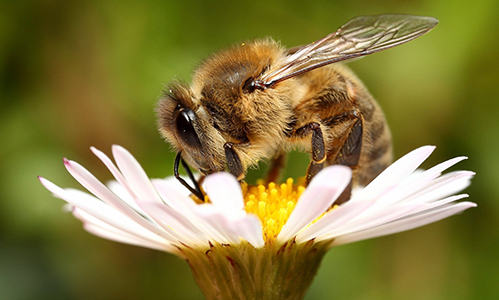
BBC (4/4/17)
Bees pollinate and can detect bombs and compose music. What would we do without them? The world owes a debt of gratitude to this hard working but under-appreciated insect. One third of the food we eat would not be available without bees, meaning our lives would be unimaginably different without them.
Bee populations are dropping by up to 80% in some countries and the consequences are potentially catastrophic. The use of neonics pesticides in farming has been one of the main causes in the decline in bee numbers and now the farming world is having to take drastic action to try and reverse the trend. The situation has become so dire in some parts of China that the government set up a scheme in which humans had to pollinate plants by hand. Researchers in America have been so worried about a world without bees that they have started to develop robotic ‘insects’ to emulate their work. What’s causing the drop in populations and what might save them?
Dr George McGavin hears from scientists and researchers in Africa, South America, Europe and Asia about the extraordinary lives and impact of bees, hearing the amazing ways in which they communicate and learn, and how complex and diverse different bee species are.
Link to Story and 27-Minute Audio
(Photo, Georgia Department of Agriculture.)
*****
First Evidence Of Bee Killing Farm Pesticides Found In Drinking Water
By Ben Guarino
The Washington Post (4/8/17)
f the many pesticides that American farmers have embraced in their war on bugs, neonicotinoids are among the most popular. One of them, called imidacloprid, is among the world’s best-selling insecticides, boasting sales of over $1 billion a year. But with their widespread use comes a notorious reputation — that neonics, as they are nicknamed, are a bee killer. A 2016 study suggested a link between neonicotinoid use and local pollinator extinctions, though other agricultural researchers contested the pesticides’ bad rap.
As the bee debate raged, scientists studying the country’s waterways started to detect neonicotinoid pollutants. In 2015, the U.S. Geological Survey collected water samples from streams throughout the United States and discovered neonicotinoids in more than half of the samples.
And on Wednesday, a team of chemists and engineers at the USGS and University of Iowa reported that they found neonicotinoids in treated drinking water. It marks the first time that anyone has identified this class of pesticide in tap water, the researchers write in Environmental Science & Technology Letters.
Gregory LeFevre, a study author and U of Iowa environmental engineer, told The Washington Post that the find was important but not immediate cause for alarm.
“Having these types of compounds present in water does have the potential to be concerning,” he said, “but we don’t really know, at this point, what these levels might be.”
If the dose makes the poison, the doses of insect neurotoxin reported in the new study were quite small. The scientists collected samples last year from taps in Iowa City as well as on the university campus and found neonicotinoid concentrations ranging from 0.24 to 57.3 nanograms per liter — that is, on a scale of parts per trillion. “Parts per trillion is a really, really small concentration,” LeFevre said, roughly equal to a single drop of water plopped into 20 Olympic-size swimming pools.
The Environmental Protection Agency has not defined safe levels of neonicotinoids in drinking water, in part because the chemicals are relative newcomers to the pesticide pantheon. “There is no EPA standard for drinking water,” LeFevre said. …
